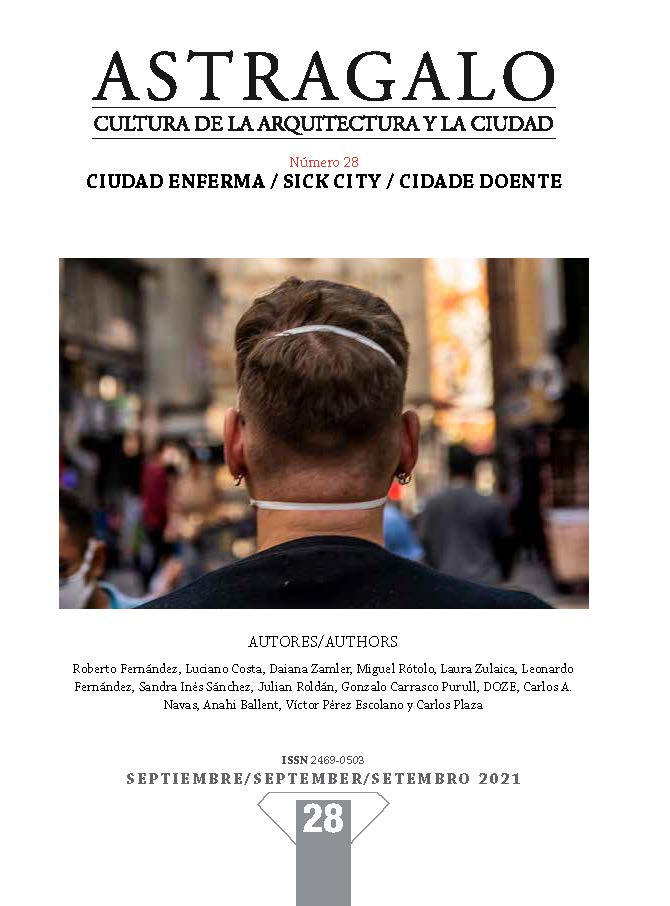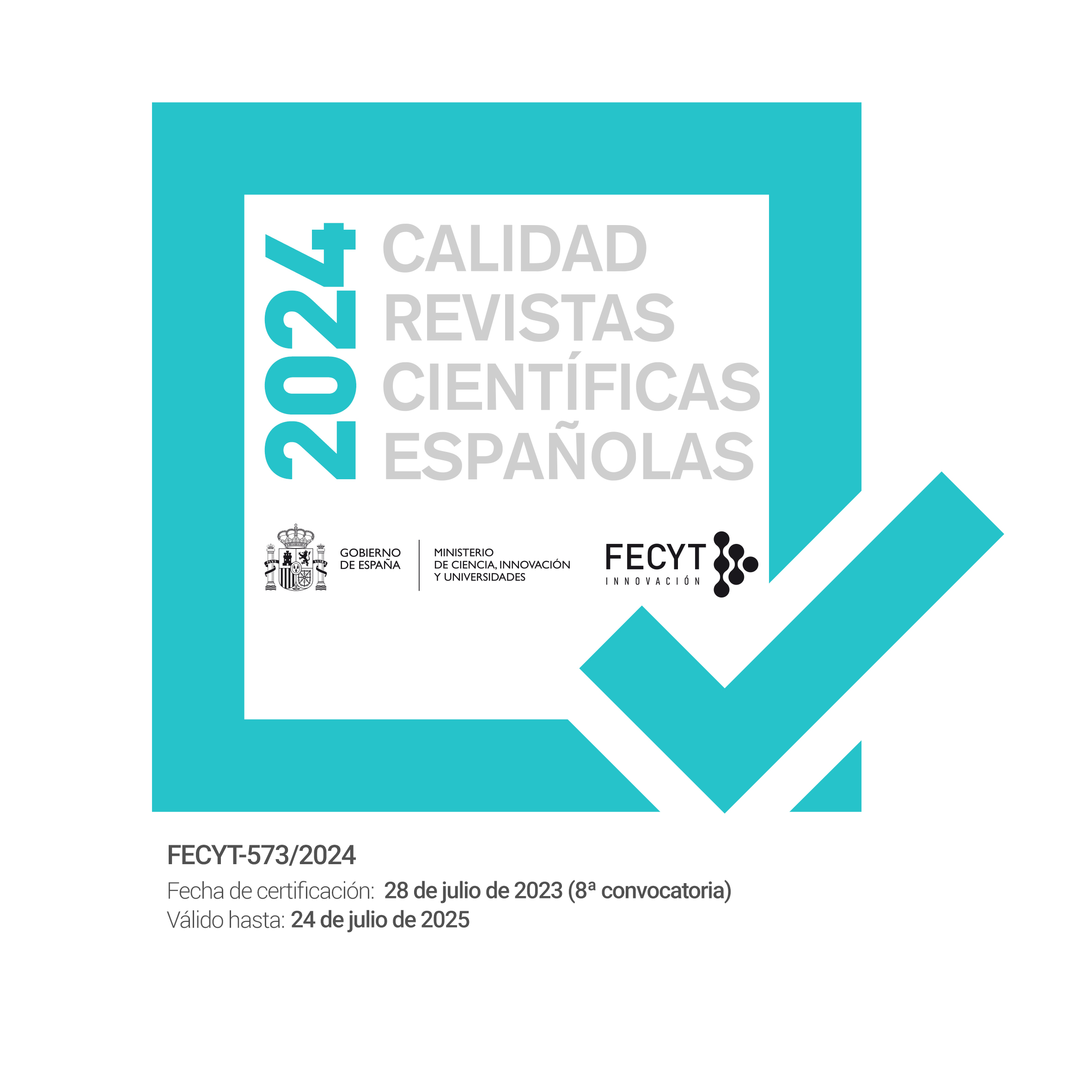Vol. 1 No. 28 (2021): Ciudad Enferma

SICK CITY
The virosal coronation of the world 2019-20 (21?) raises philosophical, political and vital concerns and calls or demands to think again about the already devalued theoretical-disciplinary arsenal of architecture.
For the time being, the virtuous restoration of the Foucaultian hell of panoptics and different models of reclusion and therapeutic segregation of bodies can be seen. What took a century to counteract - that insidious functionalist vocation of separating, distinguishing and classifying, which perhaps unites the ideas of the end of the 18th century with the spirit of the CIAM - is reborn, valued by the hygienists who cry out for help from specialist-spatialists who ensure social distances and porosities as well as manage to make the lockdowns more pleasant. With concerts of balconies and unusual plant arrangements and various effects to avoid spatial deficits.
To help you think about this intense current situation, it will be worthwhile to point out some directions for reflection:
1 At a distance, it may be interesting to analyse the social diseases of the mid-19th century (which had been recurring with different intensity and location at least since the medieval Black Death) as circumstances that produced the beginning of hygienist thinking (with Richardson's Hygeia for example) and the infrastructural will to improve the sanitation of cities through an evident transfer of utility from the nascent industrial capitalism to finance this modernisation. The industrialists of the 19th century -Engels was one of them- as well as the malevolent Henry Ford today seem to be candidates for the Nobel Peace Prize, compared to the inhuman (not post-human) ferocity of the select world club of billionaires.
2 The pandemic becomes a syndemic (a new name that seems to exalt its magnitude) as a double consequence of economic-cultural globalization and the intensity of liquid economies-cultures according to the viscous nickname applied by Bauman, liquidating in one sense the quality of the world - devastated nature that allows the flourishing of a multitude of zoonoses - and in another, compromising global health because now things, people and information flow (or flowed until just yesterday). There is at least a 30-year history of serious and diverse zoonoses, as reported by David Quanmen, which did not achieve non-pandemic status simply because absolute globalisation had not reached its zenith.
3 It is curious to note an almost joyful return to a certain ultra-valuation of the criterion of a medieval city, not only in the already pre-announced neo-medievalities described by Eco since the 1970s as an expression of apocalyptic cultures, but more recently in the desperate notion of proposing the 15-minute city, whose graphics proposed by Carlos Moreno - one of his apologists - are singularly similar to the artisan's quartiers of the 13th century, even drawn by hand. A little more sophisticated - through rendering - but the same in trying to propose the creation of small residential nuclei with the aim of integrating work and food production into the whole is the project that Guallart Architects developed to propose the New Area of Xiong'an, which is 120 kilometres from Beijing and is announced as the first post-covid city.
4 As a slightly allusive expression of establishing one's place in the world of each of us, a radical terraplanarist geometry of lines, points and crosses is proliferating everywhere, either as indications of the desire for emptiness (in underground stations or while waiting for the dentist), or as gentle instructions for distancing and sponging each body ideally separated from all others by clinically recommended distances, All of which organizes humans in rows to access the cash machines or the supermarket checkouts and which unfolds a new kind of drawn city, in a rather regularized and modular op art that even feeds the most audacious innovations of Covadian urbanism that, as in Barcelona, paint the streets and pavements with abundant white and yellow graphics that propose pedestrian and bicycle spaces and banish buses and cars, thus feeding new formats of suburban cities.
5 In the polarity of Chinese development - embodied by Wuhan, the city where it all began, where bat soup is eaten but which is also (or because of this) the capital of 5G - the recent urbanity agglomerates people who maintain intense features of rural culture (eating any live animal and not with better natural health but with worse statistics and health treatments) and who are disciplined like few others to submit to the kind of vigilance they chose in nearby Samsung Korea, whose technology also manages to connect healthy and sick people live, bringing new and intense versions of a great new brotherhood that, beyond the Orwellian horrors, seems to have saved lives by detecting each new infected person and their movements in real time. From this strengthening of the meticulous tracking of the life of each South Korean, the idea of electronic salvation is spreading over the world, in which each one will be able to survive from now on to the disease but also to other issues such as work, education, delivery and even to the various instances of emotional relationships.
6 And the most radical but still invisible end: the apparent collapse of the global economy (at least with a crisis of the greatest magnitude that we can remember), the unfathomable drifts of antisocial policies (from Trump and Bolsonaro to the extended European pleiadings of different interpreters of the amicably called new right), no glimpse or concrete manifestation of redirecting the planet towards the cessation of global warming and the regression of biodiversity, and a whole agenda that is necessary to reinterpret the perspective of better territorialities.
Astragalo invites interested authors from different disciplines who know how to address the above arguments to participate through articles and reviews. As a reflective basis, the lead article by Professor Roberto Fernández, which will be published in this issue, can serve as a focus of attention and critique, even for authors who wish to participate in this call for papers:
SIETE NOTAS SOBRE LA INMUNDA CORONACION.pdf (Only in Spanish)













